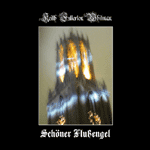 There's something new churning inside the supernatural bones of thesesongs. The world of instrumental evolution and ultra-processed sound isripe with abrasiveness and cosmic dust. While most of what KeithFullerton Whitman releases under his own name is numinous and hazy,there's an extra dose of the dark and unfathomable on Schöner Flußengel. Bits and pieces of Antithesisremain on this record; the album moves via the progression of obviousinstrumentation and recognizable musical elements. The record floats,however, in a way that its predecessor did not. Whitman's melodicmovements are seemingly circular and they build a labyrinthinestructure that lacks no amount of intimidation. "Lixus (VersionAnalogique)" opens the album with the ghastly moan of cymbalsscratching against each other, but the cymbals give way suddenly to aguitar melody that will be repeated later in the album. Lightpercussion highlights this oddly looped melody until strange soundsbegin to shine over it and place it within the context of something fargreater than itself. The guitar falls away into an abyss of heavy andsubtle percussive elements and whale-like echoes. Immediately followingthis thematic opening is a giant hole in the space-time continuum. It'sas though a massive star collapsed in on itself right in the middle ofthis record and left a record of its nature. The massive and meandering"Bewusstseinserweiternd Tonaufnahme (Einer & Zweiter Teile)" is aconfounding piece of recording. Like a mammoth and unmovable monumentdedicated to the ruinous gods of the ancient world, it towers over therest of Schöner Flußengel and establishes the tone that comesto dominate the record. At various points in this song I'm quite surethat it is the moan of devilish monks I'm hearing reverberate throughthe morbidly decorated architecture of an unholy church. The dark,all-consuming sound continues up and until "Lixus (Version Numerique)"and the closing "Weiter." The guitar theme from the opening trackreturns and is now complimented by a host of obscene sounds and starryshrieks. Distortion stumbles back and forth, bleating and honking inshort bursts and adding a fullness that was missing from "Lixus(Version Analogique)." Instead of fading into nothingness, however, thewave of guitar and alien gasps resolves itself into a stunning displayor synthetic orchestras and rhythmic, digital crashes. A piano ormodified organ sound (sometimes even sounding like a strange guitar)rotates through a series of patterns, both percussive and melodic innature, which creates a beautiful stream of artificial chamber music.Slowly the baroque style of the piece transforms into a seemingly liveperformance inside an imagined temple with its roof open to theterrifying vacancy above. The bizarre and grotesquely hypnoticqualities it harbors provide a mysterious aura around it that makesrepeated listens necessary and the record more enjoyable each timethrough. -
There's something new churning inside the supernatural bones of thesesongs. The world of instrumental evolution and ultra-processed sound isripe with abrasiveness and cosmic dust. While most of what KeithFullerton Whitman releases under his own name is numinous and hazy,there's an extra dose of the dark and unfathomable on Schöner Flußengel. Bits and pieces of Antithesisremain on this record; the album moves via the progression of obviousinstrumentation and recognizable musical elements. The record floats,however, in a way that its predecessor did not. Whitman's melodicmovements are seemingly circular and they build a labyrinthinestructure that lacks no amount of intimidation. "Lixus (VersionAnalogique)" opens the album with the ghastly moan of cymbalsscratching against each other, but the cymbals give way suddenly to aguitar melody that will be repeated later in the album. Lightpercussion highlights this oddly looped melody until strange soundsbegin to shine over it and place it within the context of something fargreater than itself. The guitar falls away into an abyss of heavy andsubtle percussive elements and whale-like echoes. Immediately followingthis thematic opening is a giant hole in the space-time continuum. It'sas though a massive star collapsed in on itself right in the middle ofthis record and left a record of its nature. The massive and meandering"Bewusstseinserweiternd Tonaufnahme (Einer & Zweiter Teile)" is aconfounding piece of recording. Like a mammoth and unmovable monumentdedicated to the ruinous gods of the ancient world, it towers over therest of Schöner Flußengel and establishes the tone that comesto dominate the record. At various points in this song I'm quite surethat it is the moan of devilish monks I'm hearing reverberate throughthe morbidly decorated architecture of an unholy church. The dark,all-consuming sound continues up and until "Lixus (Version Numerique)"and the closing "Weiter." The guitar theme from the opening trackreturns and is now complimented by a host of obscene sounds and starryshrieks. Distortion stumbles back and forth, bleating and honking inshort bursts and adding a fullness that was missing from "Lixus(Version Analogique)." Instead of fading into nothingness, however, thewave of guitar and alien gasps resolves itself into a stunning displayor synthetic orchestras and rhythmic, digital crashes. A piano ormodified organ sound (sometimes even sounding like a strange guitar)rotates through a series of patterns, both percussive and melodic innature, which creates a beautiful stream of artificial chamber music.Slowly the baroque style of the piece transforms into a seemingly liveperformance inside an imagined temple with its roof open to theterrifying vacancy above. The bizarre and grotesquely hypnoticqualities it harbors provide a mysterious aura around it that makesrepeated listens necessary and the record more enjoyable each timethrough. -
Two new shows just for you. We have squeezed out two extended release episodes for this weekend to get you through this week. They contain mostly new songs but there's also new issues from the vaults. The first show features music from Rider/Horse, Mint Field, Robert Aiki Aubrey Lowe, Anastasia Coope, ISAN, Stone Music, La Securite, Bark Psychosis, Jon Rose, Master Wilburn Burchette, Umberto, Wand, Tim Koh, Sun An, and Memory Drawings. The second episode has music by Laibach, Melt-Banana, Chuck Johnson, X, K. Yoshimatsu, Dorothy Carter, Pavel Milyakov, Violence Gratuite, Mark Templeton, Dummy, Endon, body / negative, Midwife, Alberto Boccardi, Divine. Cow in Maui from Veronika in Vienna. Get involved: subscribe, review, rate, share with your friends, send images! |



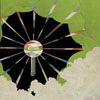 For this band to adopt the name Landing seems like a dash of irony.There is nothing grounded about this band, nothing the least bitindicative that they are or are about to touch the Earth and accept therules and mechanics that govern it. Their sound is one of the sublime,the surreal, more akin to the forces that invisibly hold things aloftand floating than the submission to gravity. "Fluency of Colors"initiates the album's upward motion, each note slipping over anotherand flickering darkly like a dying bulb burning after images intomemory. The music envelops, and what at first seems so delicate andvaporous begins to obscure everything else. Sphereis an album of meditation, of contemplative thought, using thehypnotic, patient bloom of the band's music to instigate a sense ofcalm and focus. Along the course of the album, there are threeinstrumental interludes, each titled "Gravitational." These interludesare the moment of greatest upheaval and dissonance on the album, pointswhere the urge to escape the pull results in stress and tension. Thethree pieces gradually build from the chilly wind-scape of the first tothe creaking buzz of the third. These pieces serve as weights orcounterpoints to the soaring jags the compromise the proper songs."Solstice" shimmers brightly while a stinging updraft of guitar searsthrough the temperate atmosphere. The intensity of the guitar's ascentis almost jarring in contrast to the lightness of the back drop,however the contrast heightens the perception of each elementindividually until ultimately they coalesce together perfectly. Thevery titles of the songs hint at a connection with perception,connection with the sights, sounds, and smells of the world around you.This thread of connection stretches itself between each song and bindstogether the album's experience, linking it to a greater application ofsense and feeling. Sphere would make an excellent album for sinking into thought, escaping the white noise of the mind.
For this band to adopt the name Landing seems like a dash of irony.There is nothing grounded about this band, nothing the least bitindicative that they are or are about to touch the Earth and accept therules and mechanics that govern it. Their sound is one of the sublime,the surreal, more akin to the forces that invisibly hold things aloftand floating than the submission to gravity. "Fluency of Colors"initiates the album's upward motion, each note slipping over anotherand flickering darkly like a dying bulb burning after images intomemory. The music envelops, and what at first seems so delicate andvaporous begins to obscure everything else. Sphereis an album of meditation, of contemplative thought, using thehypnotic, patient bloom of the band's music to instigate a sense ofcalm and focus. Along the course of the album, there are threeinstrumental interludes, each titled "Gravitational." These interludesare the moment of greatest upheaval and dissonance on the album, pointswhere the urge to escape the pull results in stress and tension. Thethree pieces gradually build from the chilly wind-scape of the first tothe creaking buzz of the third. These pieces serve as weights orcounterpoints to the soaring jags the compromise the proper songs."Solstice" shimmers brightly while a stinging updraft of guitar searsthrough the temperate atmosphere. The intensity of the guitar's ascentis almost jarring in contrast to the lightness of the back drop,however the contrast heightens the perception of each elementindividually until ultimately they coalesce together perfectly. Thevery titles of the songs hint at a connection with perception,connection with the sights, sounds, and smells of the world around you.This thread of connection stretches itself between each song and bindstogether the album's experience, linking it to a greater application ofsense and feeling. Sphere would make an excellent album for sinking into thought, escaping the white noise of the mind. 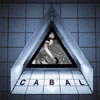 Though Chris Carter and Cosey Fanni Tutti have released a cartload ofalbums since 1981 under their familiar Chris & Cosey banner, Cabalis actually the debut album under their new guise of Carter Tutti. Thissudden switch from their sweetly alliterative Christian names to theirdecidedly more turgid surnames also signals a slight change of musicalstrategy. The music on Cabal is more abstract than past efforts, which were largely beat-driven and contained definite songs. Cabalis still very much recognizable as being the work of Chris and Cosey,with its deep technoid beat constructions and the breathy sexuality ofCosey's vocals, but there is a growing de-emphasis on song structure,and a clear move towards more amorphous and ambient soundscapes.Appropriate to its title, the album seems to exist in a nebuloussubterranean chamber, the musicians swimming lithe and eel-like in somekind of amniotic fluid, sending electrical pulses back and forth inwordless communication. I was immediately reminded of other aquaticallyfixated techno, such as that of the now-defunct Drexciya, or some ofThe Orb's more cohesive efforts. But Carter Tutti's brand of techno isdeep and druggy, shivering and sexual, finding its shape along thesurfaces of the female body. The musicians seem to be equating thesecret intrigue of the title with the labial folds or the dark recessesof the vagina, rising and falling with the rhythms of sexual congress.Dreamlike reverberations are sent careening into the deep echo chamberof each dubby bass rumble. Each track seems to melt into the next,forming one long continuous shape, kept in constant motion byrelentless snaking beat constructions. Each track is thoroughlydrenched in this muted, soft-edged aquatic atmosphere, the occasionalblasts of horn blowing bubbles in the murky depths. Much of the albumis suitably hypnotic, and the nebulous, undefined quality of many ofthe tracks helps to create this trancelike atmosphere. As the albumprogresses towards its conclusion, the tracks become ever more deeper,the frequencies lowering, providing a true test of a sound system'sability to handle rumbling, subterranean bass. The production istop-notch throughout, with each element crisply rendered and coastingacross the stereo channels, providing an immersive psychedelicenvironment that never failed to be complete engaging, sinking intolower and lower depths of hidden underwater chambers. My favoritemoment came on "Passing," when the sudden sad intonations of a droningharmonica provided an indescribably beautiful counterpoint to theheaving bass rumbles and Cosey's manipulated vocal cooing. Cabal is quite possibly the sexiest album I've heard all year.
Though Chris Carter and Cosey Fanni Tutti have released a cartload ofalbums since 1981 under their familiar Chris & Cosey banner, Cabalis actually the debut album under their new guise of Carter Tutti. Thissudden switch from their sweetly alliterative Christian names to theirdecidedly more turgid surnames also signals a slight change of musicalstrategy. The music on Cabal is more abstract than past efforts, which were largely beat-driven and contained definite songs. Cabalis still very much recognizable as being the work of Chris and Cosey,with its deep technoid beat constructions and the breathy sexuality ofCosey's vocals, but there is a growing de-emphasis on song structure,and a clear move towards more amorphous and ambient soundscapes.Appropriate to its title, the album seems to exist in a nebuloussubterranean chamber, the musicians swimming lithe and eel-like in somekind of amniotic fluid, sending electrical pulses back and forth inwordless communication. I was immediately reminded of other aquaticallyfixated techno, such as that of the now-defunct Drexciya, or some ofThe Orb's more cohesive efforts. But Carter Tutti's brand of techno isdeep and druggy, shivering and sexual, finding its shape along thesurfaces of the female body. The musicians seem to be equating thesecret intrigue of the title with the labial folds or the dark recessesof the vagina, rising and falling with the rhythms of sexual congress.Dreamlike reverberations are sent careening into the deep echo chamberof each dubby bass rumble. Each track seems to melt into the next,forming one long continuous shape, kept in constant motion byrelentless snaking beat constructions. Each track is thoroughlydrenched in this muted, soft-edged aquatic atmosphere, the occasionalblasts of horn blowing bubbles in the murky depths. Much of the albumis suitably hypnotic, and the nebulous, undefined quality of many ofthe tracks helps to create this trancelike atmosphere. As the albumprogresses towards its conclusion, the tracks become ever more deeper,the frequencies lowering, providing a true test of a sound system'sability to handle rumbling, subterranean bass. The production istop-notch throughout, with each element crisply rendered and coastingacross the stereo channels, providing an immersive psychedelicenvironment that never failed to be complete engaging, sinking intolower and lower depths of hidden underwater chambers. My favoritemoment came on "Passing," when the sudden sad intonations of a droningharmonica provided an indescribably beautiful counterpoint to theheaving bass rumbles and Cosey's manipulated vocal cooing. Cabal is quite possibly the sexiest album I've heard all year.  Anything that can remotely resemble widespread commercial success escaped the Frames for most of their career when their last album, Set List, broke into the Top Ten in their native Ireland. Almost a year later, it was released on these shores as the first album in a new deal with Anti, garnering the band more attention in America as a band to watch intently. Their newest album was released in Ireland several weeks ago, and Anti will release it in the US and Europe in February. Until then, rabid fans can order through select dealers linked on the band's website to absorb the finest work in the band's decade-plus lifespan, as well as their most coordinated and complete effort to date.
Anything that can remotely resemble widespread commercial success escaped the Frames for most of their career when their last album, Set List, broke into the Top Ten in their native Ireland. Almost a year later, it was released on these shores as the first album in a new deal with Anti, garnering the band more attention in America as a band to watch intently. Their newest album was released in Ireland several weeks ago, and Anti will release it in the US and Europe in February. Until then, rabid fans can order through select dealers linked on the band's website to absorb the finest work in the band's decade-plus lifespan, as well as their most coordinated and complete effort to date. Atmospheric tones have always been the trademark of Climax GoldenTwins, and on their latest release the group, who make little effort toidentify themselves beyond their collective name, moves into the moreintimate side of their range. Maybe scoring the feature film Session Ninehad an affect on the band, as the film features one character listeningto old recordings of psychological evaluations; these songs are createdaround acoustic guitars primarily and interwoven with sampledrecordings from over sixty years ago. These samples can be gloriouslysimple, from a conversation to narrative storytelling, or a fathertalking to a child, and when paired with the Twins music andmanipulation they take on a whole new life beyond their quaintbeginnings. Even though the music is quieter and sweeter than otherreleases, there's still an undercurrent of darkness, or maybe just atwinge of mortality here and there. Ominous feelings appear on selectsongs, like the voice at the end of "Every Word in the Bible" or thechild's voice on "Billy McGee McGaw," but these sometimes seemunintentionally so, and the music just seems to fit wherever andwhatever happens. Occasionally, though, like on "Little Noreen," themusic sets the scenario, and in these cases it's almost always asinister undertone. Sparseness is a key element all over, with songsnot extending into grandiose affairs or snarls of noise, just speakingtheir minds with as little words as possible. The album's second trackis the keynote speaker in that regard: called "Upright," the song is avery simple melody played on an upright piano with brushed cymbals, thevery "trick of singularity" as Shakespeare put it. There's littlevocals besides the scratchy recordings, but when there are ("Solid GoldMicrophone," for instance) they fit perfectly, and it's as though it'sa cover of a golden oldie just discovered in grandma's collection,brought forth and updated for the new ears of today. Maybe that's thekey: using technology of today to make songs that could fit somewherelost in time; and that's always seemed to be this group's specialty,never as fully realized until now.
Atmospheric tones have always been the trademark of Climax GoldenTwins, and on their latest release the group, who make little effort toidentify themselves beyond their collective name, moves into the moreintimate side of their range. Maybe scoring the feature film Session Ninehad an affect on the band, as the film features one character listeningto old recordings of psychological evaluations; these songs are createdaround acoustic guitars primarily and interwoven with sampledrecordings from over sixty years ago. These samples can be gloriouslysimple, from a conversation to narrative storytelling, or a fathertalking to a child, and when paired with the Twins music andmanipulation they take on a whole new life beyond their quaintbeginnings. Even though the music is quieter and sweeter than otherreleases, there's still an undercurrent of darkness, or maybe just atwinge of mortality here and there. Ominous feelings appear on selectsongs, like the voice at the end of "Every Word in the Bible" or thechild's voice on "Billy McGee McGaw," but these sometimes seemunintentionally so, and the music just seems to fit wherever andwhatever happens. Occasionally, though, like on "Little Noreen," themusic sets the scenario, and in these cases it's almost always asinister undertone. Sparseness is a key element all over, with songsnot extending into grandiose affairs or snarls of noise, just speakingtheir minds with as little words as possible. The album's second trackis the keynote speaker in that regard: called "Upright," the song is avery simple melody played on an upright piano with brushed cymbals, thevery "trick of singularity" as Shakespeare put it. There's littlevocals besides the scratchy recordings, but when there are ("Solid GoldMicrophone," for instance) they fit perfectly, and it's as though it'sa cover of a golden oldie just discovered in grandma's collection,brought forth and updated for the new ears of today. Maybe that's thekey: using technology of today to make songs that could fit somewherelost in time; and that's always seemed to be this group's specialty,never as fully realized until now.  The first thing that drew me to Japanese solo artist Takahiro Chiba(aka Slowly Minute) and his first official North American release wasthe connection with Adam Pierce (Mice Parade) and his NYC-based BubbleCore label. Being somewhat familiar with Pierce's unique approach toblending rhythms and music of diverse cultures, I was expectingsomething equally intriguing and exciting from Slowly Minute byassociation. Although not as high energy as Mice Parade, I was quitesurprised and definitely not disappointed. Tomorrow World'snear-raw mix of generic synth sounds, harp samples, hiccupping RolandTR-707 beats, acoustic guitar and piano add a certain charm to its lushyet strong compositions of weaving melodies and quirky arrangements.I'd been listening to this disc almost exclusively on headphones duringdaily commuting, so even the finest of details were apparent from theget-go. From the polyrhythmic programming and looping guitars andweaving keyboard of opener "The Song of the Sun in Autumn's Holiday,"Chiba sets a very relaxing and uplifting tone which carries throughoutmost of the disc. The repetitive guitar arpeggiation and jazzy ridecymbal motif of "Minutes Made!" lays down the foundation for bursts oflow-end synth squelches, distorted guitars and tom-tom rolls to playover and gradually shift into a more straight-ahead number. Thegorgeous "Little Bird" quickly became my favorite; itsBrazilian-flavored nylon string guitar and upright bass set to odd yetplayful machine beats and dense piano/keyboard/harp arrangements. Withits multiple melodic lines and feel changes, it's amazing that Chibamanaged to piece it all together without it sounding cluttered. "It'sthe Girl Who Goes to Do Some Shopping" turns on a dime from itstecho-esque rhythmic keyboard intro to sampled drum fills tofast-forwarded tape chirpings and dance beats. Although Chiba reliesheavily on the generic keyboard and drum machine sounds without muchaltering, what impresses me most about Tomorrow World is hisability to make the simple compositions sound complex and vice versa.Having recently formed The Lopops as a guitarist, I'm anxious to hearthis undeniably talented musician in a group setting or perhaps on afuture Mice Parade recording.
The first thing that drew me to Japanese solo artist Takahiro Chiba(aka Slowly Minute) and his first official North American release wasthe connection with Adam Pierce (Mice Parade) and his NYC-based BubbleCore label. Being somewhat familiar with Pierce's unique approach toblending rhythms and music of diverse cultures, I was expectingsomething equally intriguing and exciting from Slowly Minute byassociation. Although not as high energy as Mice Parade, I was quitesurprised and definitely not disappointed. Tomorrow World'snear-raw mix of generic synth sounds, harp samples, hiccupping RolandTR-707 beats, acoustic guitar and piano add a certain charm to its lushyet strong compositions of weaving melodies and quirky arrangements.I'd been listening to this disc almost exclusively on headphones duringdaily commuting, so even the finest of details were apparent from theget-go. From the polyrhythmic programming and looping guitars andweaving keyboard of opener "The Song of the Sun in Autumn's Holiday,"Chiba sets a very relaxing and uplifting tone which carries throughoutmost of the disc. The repetitive guitar arpeggiation and jazzy ridecymbal motif of "Minutes Made!" lays down the foundation for bursts oflow-end synth squelches, distorted guitars and tom-tom rolls to playover and gradually shift into a more straight-ahead number. Thegorgeous "Little Bird" quickly became my favorite; itsBrazilian-flavored nylon string guitar and upright bass set to odd yetplayful machine beats and dense piano/keyboard/harp arrangements. Withits multiple melodic lines and feel changes, it's amazing that Chibamanaged to piece it all together without it sounding cluttered. "It'sthe Girl Who Goes to Do Some Shopping" turns on a dime from itstecho-esque rhythmic keyboard intro to sampled drum fills tofast-forwarded tape chirpings and dance beats. Although Chiba reliesheavily on the generic keyboard and drum machine sounds without muchaltering, what impresses me most about Tomorrow World is hisability to make the simple compositions sound complex and vice versa.Having recently formed The Lopops as a guitarist, I'm anxious to hearthis undeniably talented musician in a group setting or perhaps on afuture Mice Parade recording. 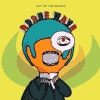 Every once in a while an album comes along that is so unfortunatelyignored that it deserves reissue on a bigger label with more clout,hopefully widening the band's audience for future mayhem on albums tocome. Such is the case with Rogue Wave, whose line-up on their tenderdebut was a mere shadow of their current roster, but the songs arephenomenal nonetheless, giving indie pop a real shot in the arm withclever songwriting and warm sometimes playful arrangements. Zach Roguerecorded the album mostly on his own with a few friends over two yearsago, then released it on his own Responsive Recordings label afterforming a band to perform the songs in public. As it turns out, thelive band performs the songs with more depth and vocabulary, attractingthem attention as a well-versed and dynamic live act. The next album,then, will show the true face of the band that is Rogue Wave, but fornow the stunning debut will have to do. Every song on it is a perfectpop moment, with great melodies, harmonies, and the kind of magic thatformer tour mates the Shins or others have had for one or two songs.None of them lasts over five minutes, and many are three and under,keeping the whole experience short and quaint. Rogue, who changed hislast name from Schwartz, obviously has a knack for quirky sounds andsweet lyrics, though he also had a lot of questions in his head whenthese songs were recorded, as every song has a bit of a hope orquestion in it. It's the little touches that make it perfect: birdschirping, or faded harmonica, or layered vocals and backwardsrecording. Even the song titles have that little twist of a sense ofhumor piled in with earnest emotion ("Nourishment Nation," "Kicking theHeart Out"). It's an album recorded by a man who had no home and wasn'tsure what was coming next, but he had to get the noises out of hishead. Rogue Wave in this form was a tour de force even before othermembers entered the mix, so there's no telling what they'll come upwith next. Hopefully, with just enough luck, Shadow won't be an act too hard for them to follow.
Every once in a while an album comes along that is so unfortunatelyignored that it deserves reissue on a bigger label with more clout,hopefully widening the band's audience for future mayhem on albums tocome. Such is the case with Rogue Wave, whose line-up on their tenderdebut was a mere shadow of their current roster, but the songs arephenomenal nonetheless, giving indie pop a real shot in the arm withclever songwriting and warm sometimes playful arrangements. Zach Roguerecorded the album mostly on his own with a few friends over two yearsago, then released it on his own Responsive Recordings label afterforming a band to perform the songs in public. As it turns out, thelive band performs the songs with more depth and vocabulary, attractingthem attention as a well-versed and dynamic live act. The next album,then, will show the true face of the band that is Rogue Wave, but fornow the stunning debut will have to do. Every song on it is a perfectpop moment, with great melodies, harmonies, and the kind of magic thatformer tour mates the Shins or others have had for one or two songs.None of them lasts over five minutes, and many are three and under,keeping the whole experience short and quaint. Rogue, who changed hislast name from Schwartz, obviously has a knack for quirky sounds andsweet lyrics, though he also had a lot of questions in his head whenthese songs were recorded, as every song has a bit of a hope orquestion in it. It's the little touches that make it perfect: birdschirping, or faded harmonica, or layered vocals and backwardsrecording. Even the song titles have that little twist of a sense ofhumor piled in with earnest emotion ("Nourishment Nation," "Kicking theHeart Out"). It's an album recorded by a man who had no home and wasn'tsure what was coming next, but he had to get the noises out of hishead. Rogue Wave in this form was a tour de force even before othermembers entered the mix, so there's no telling what they'll come upwith next. Hopefully, with just enough luck, Shadow won't be an act too hard for them to follow.  After making an international name for themselves as part of last year's collaboration with Jan Jelinek on his 1+3+1disc, Australian jazzers Triosk are now set to release their firstfull-length recording. Drawing on as much of the electronic elements asjazz in both composition and instrumentation, the ten tracks on Moment Returnsvary from subtle glitch and pinging soundscapes, intricate and swinginggrooves with dark, warm overtones and the shimmering beauty of classicpiano trio ballads. The static scratch and pop of a record stuck at theend of its groove acts as a metronomic click track on "ChronosynclasticInfundibula" while drummer Laurence Pike and bassist Ben 'Donny' Wapleslock into freeform rolls and trills that support pianist AdrianKlumpes' anguished lines which become taut and gradually relax intosome great classical explorations. The heavy-handed Rhodes progressionsof "Two; Twelve" are driven by a broken-up, slinky groove which tendsto tastefully "hide the one" without becoming too pretentious. Being asucker for a great Rhodes performance, this track also stood out for meas a catchy composition for its great dialogue as the playerscommunicate through their instruments. The sensitive treatment of theballad "Re-Ignite" brought on gooseflesh and a near-swelling of tearsdue to its hauntingly beautiful bass progression swaddled in rich pianochords. The secret weapon on this track is Pike's brushed sizzle cymbalwhich resonates throughout. For a group of twenty-somethings, thematurity of musicianship is shown here by their ability to underplay atjust the right time. The lengthy "I Am a Beautiful and UniqueSnowflake" swells from subtle ballad to clanging unison eighth notesthat compartmentalize its chord progressions. This track would not beout of place in accompanying a silent movie where the steam engineapproaches the damsel in distress tied to the tracks as the villainstrokes his mustache. Based on the strong compositions and finemusicianship throughout Moment Returns, it's safe to say that there'll be a lot more heard from Triosk and its group members in the years to come.
After making an international name for themselves as part of last year's collaboration with Jan Jelinek on his 1+3+1disc, Australian jazzers Triosk are now set to release their firstfull-length recording. Drawing on as much of the electronic elements asjazz in both composition and instrumentation, the ten tracks on Moment Returnsvary from subtle glitch and pinging soundscapes, intricate and swinginggrooves with dark, warm overtones and the shimmering beauty of classicpiano trio ballads. The static scratch and pop of a record stuck at theend of its groove acts as a metronomic click track on "ChronosynclasticInfundibula" while drummer Laurence Pike and bassist Ben 'Donny' Wapleslock into freeform rolls and trills that support pianist AdrianKlumpes' anguished lines which become taut and gradually relax intosome great classical explorations. The heavy-handed Rhodes progressionsof "Two; Twelve" are driven by a broken-up, slinky groove which tendsto tastefully "hide the one" without becoming too pretentious. Being asucker for a great Rhodes performance, this track also stood out for meas a catchy composition for its great dialogue as the playerscommunicate through their instruments. The sensitive treatment of theballad "Re-Ignite" brought on gooseflesh and a near-swelling of tearsdue to its hauntingly beautiful bass progression swaddled in rich pianochords. The secret weapon on this track is Pike's brushed sizzle cymbalwhich resonates throughout. For a group of twenty-somethings, thematurity of musicianship is shown here by their ability to underplay atjust the right time. The lengthy "I Am a Beautiful and UniqueSnowflake" swells from subtle ballad to clanging unison eighth notesthat compartmentalize its chord progressions. This track would not beout of place in accompanying a silent movie where the steam engineapproaches the damsel in distress tied to the tracks as the villainstrokes his mustache. Based on the strong compositions and finemusicianship throughout Moment Returns, it's safe to say that there'll be a lot more heard from Triosk and its group members in the years to come.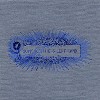 Elegant packaging and artwork adorn Constellation's label compilation, Song of the Silent Land,an album sold originally as a tour CD produced for and sold on a 2004European tour featuring a few of Constellation's lineup. Now, though,it is widely available to us colonials in the New World. Inside thecarefully wrought artwork, the CD features fourteen rare and unreleasedsongs by the roster of the label and then some. I am uncertain what theSilent Land in the title is, but if you take in the big picture, hereis what you get geopolitically: a defiantly Canadian label creating acompilation for a European audience. All of this amounts in America toa not quite palatable offering from a country whom we consider our slowcousin to the north intended for a continent whose countries are quitea bit more worldly and refined than America these days (if you canjudge a country by its current administration, that is). Perhaps it isthe reactionary and reckless American brashness in me, but I wouldstill not hesitate to dump this album off the side of the nearest tallship into the murky depths of Boston harbor. I would even throw sometea overboard along with the CD, just for old time's sake. The songs onthis compilation sound largely like throw-away material, dredged fromthe dregs of each artist's sound bank. Consumers will not doubt betempted to purchase the album on the basis of Constellation all-starslike Godspeed You! Black Emperor, Exhaust, A Silver Mt. Zion, and DoMake Say Think. Unfortunately, these bands provide some of the biggestdisappointments. Godspeed's uninspired live recording of "Outro" mightbe hampered by the imprecision of the, well, live recording of it, orit might just be a substandard composition. The sound is warbly,ill-mixed, and not up to the angelic and anthemic standards of theband's studio persona. Nor does it approximate the live experience ofseeing the band perform. A Silver Mt. Zion offer a wall of noise withsome strings operating underneath it all, though at an almostindiscernible level. Le Fly Pan Am in collaboration with Tim Hecker andChristof Migone execute one of the more pleasing songs for thecompilation: the perhaps haughtily titled "Tres Tres 'Avant'" is abouncy and nearly danceable number with about three of four differentaural levels of interesting sounds going on simultaneously. Some of themore obscure artists here might catch the ear of the more attentivelistener. 1-Speed Bike, Frankie Sparo, and HangedUp all seem tothreaten songs of quality, but punctuated by the flotsam around them,it can be a little deceptive and hard to tell.
Elegant packaging and artwork adorn Constellation's label compilation, Song of the Silent Land,an album sold originally as a tour CD produced for and sold on a 2004European tour featuring a few of Constellation's lineup. Now, though,it is widely available to us colonials in the New World. Inside thecarefully wrought artwork, the CD features fourteen rare and unreleasedsongs by the roster of the label and then some. I am uncertain what theSilent Land in the title is, but if you take in the big picture, hereis what you get geopolitically: a defiantly Canadian label creating acompilation for a European audience. All of this amounts in America toa not quite palatable offering from a country whom we consider our slowcousin to the north intended for a continent whose countries are quitea bit more worldly and refined than America these days (if you canjudge a country by its current administration, that is). Perhaps it isthe reactionary and reckless American brashness in me, but I wouldstill not hesitate to dump this album off the side of the nearest tallship into the murky depths of Boston harbor. I would even throw sometea overboard along with the CD, just for old time's sake. The songs onthis compilation sound largely like throw-away material, dredged fromthe dregs of each artist's sound bank. Consumers will not doubt betempted to purchase the album on the basis of Constellation all-starslike Godspeed You! Black Emperor, Exhaust, A Silver Mt. Zion, and DoMake Say Think. Unfortunately, these bands provide some of the biggestdisappointments. Godspeed's uninspired live recording of "Outro" mightbe hampered by the imprecision of the, well, live recording of it, orit might just be a substandard composition. The sound is warbly,ill-mixed, and not up to the angelic and anthemic standards of theband's studio persona. Nor does it approximate the live experience ofseeing the band perform. A Silver Mt. Zion offer a wall of noise withsome strings operating underneath it all, though at an almostindiscernible level. Le Fly Pan Am in collaboration with Tim Hecker andChristof Migone execute one of the more pleasing songs for thecompilation: the perhaps haughtily titled "Tres Tres 'Avant'" is abouncy and nearly danceable number with about three of four differentaural levels of interesting sounds going on simultaneously. Some of themore obscure artists here might catch the ear of the more attentivelistener. 1-Speed Bike, Frankie Sparo, and HangedUp all seem tothreaten songs of quality, but punctuated by the flotsam around them,it can be a little deceptive and hard to tell.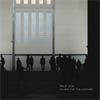 On his sixth solo album for Touch, Jeck continues his perfection of using the record player as an instrument (not as a DJ) to create a long-form piece that has no sense of gimmick or cliché, but instead is a hazy, but warm and inviting piece of captivating music that is unlike the work of anyone else. Originally intended for live performance, this studio reconstruction is amazing on its own.
On his sixth solo album for Touch, Jeck continues his perfection of using the record player as an instrument (not as a DJ) to create a long-form piece that has no sense of gimmick or cliché, but instead is a hazy, but warm and inviting piece of captivating music that is unlike the work of anyone else. Originally intended for live performance, this studio reconstruction is amazing on its own.
